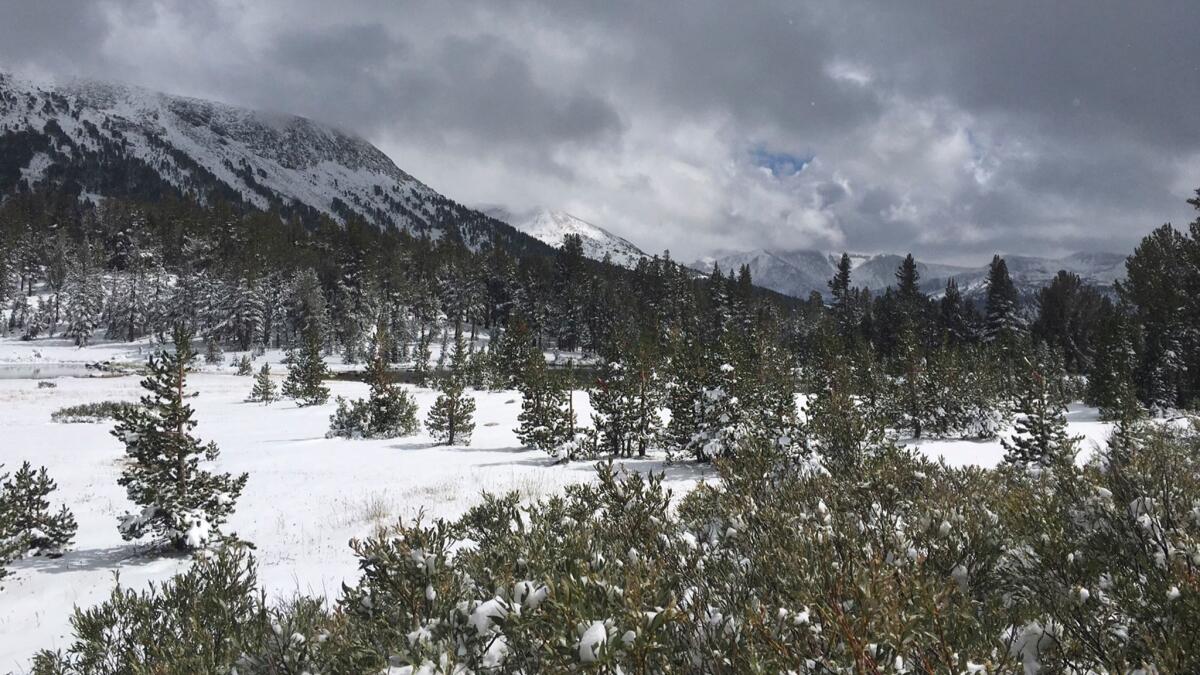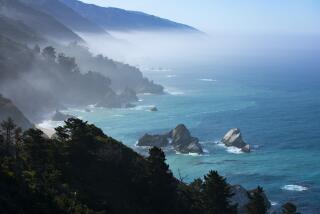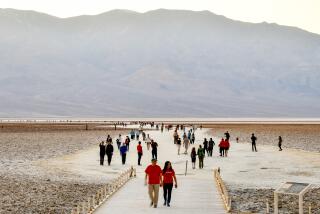Parks and passports are among the many things affected by a government shutdown

The government shutdown may wreak havoc on your visit to a unit of the National Park Service and the speed with which you can get a passport.
California’s park service websites (the list is below) included this notification: “For your planning purposes, some parks in the National Park System may have areas that remain accessible to visitors; however access may change without notice, and some parks are closed completely.
“Some lodging, restaurants, and other services may be available when provided by concessionaires or other entities.
“Be aware that there will be no National Park Service-provided visitor services, including restrooms, trash collection, facilities, or road maintenance.
For more information, see www.doi.gov/shutdown and the park website.
The shutdown website makes this statement under the National Park Service link: “Parks must notify visitors that the NPS will cease providing visitor services, including restrooms, trash collection, facilities and roads maintenance (including plowing), campground reservation and check-in/check-out services, backcountry and other permits, and public information.”
Besides California parks websites, the list below includes telephone numbers. It was unclear late Sunday whether anyone would be available to take those calls.
Yosemite’s recorded messages late Sunday included information on campgrounds from Jan. 16. A phone tree that offered a chance to speak with a park ranger said early Monday:
“The public information office will remain closed idefinitely due to the government shutdown. The park remains accessible; however, services are diminished.’
Visitors were advised that a message could be left for a park ranger but that the call would not be returned until after the shutdown was over.
Arizona’s Grand Canyon had a slightly different message for visitors on its website:
“Businesses operating within the park remain open, including lodging, restaurants, and retail. If you have questions about the operational status of a park business please reach out directly to that entity.”
Telephone numbers for Xanterra and Delaware North, park concessionaires, the Grand Canyon Assn. and Bright Angel Bikes are listed on the site.
It directs visitors to the Grand Canyon Chamber of Commerce: (928) 638-2901.
In Hawaii, part of Volcanoes National Park are off-limits to visitors, it said in a statement: “The hazardous geologic processes and the immediate threats to visitor health and safety necessitate the restriction of access to areas that are volcanically active. These closed areas include the entire summit area of Kilauea, Crater Rim Drive, Chain of Craters Road and the active lava flow within the park boundary.
“Guests at Volcano House and Kilauea Military Camp have 48 hours to depart (Monday morning). Volcano Art Center Gallery is also closed.”
The park service, which celebrated its 100th anniversary in 2016, has several types of units. The national parks, the “beauty spots” most familiar to the public, include such well-known sites as the Great Smoky Mountains National Park, the most visited national park in the system, the Grand Canyon (second most visited) and California’s Yosemite National Park (third most visited).
National seashores, battlegrounds, historic sites and monuments are among other designations within the park service system.
Passports
Those applying for passports, meanwhile, may have longer waits, depending on the length of the shutdown and the effect of 10-year-old post-9/11 legislation.
In 2017, 21.4 million passports were issued, nearly 3 million more than in 2016. That was partly the result of the Western Hemisphere Travel Initiative, which grew out of 9/11 recommendations.
Part 1 went into effect in 2007 and required travelers returning by air to the U.S. to have a passport.
As a result, more than 6 million more passports were issued in 2007 than in 2006, causing a backlog — at one point of about 3 million passports — and wait times of as much as three months.
Part 2 of the initiative was implemented in 2009; it said a passport was needed for land and sea travel besides air travel.
The issuance of those Part 1 passports may be responsible for the swell in 2017: The passports issued in 2007, good for 10 years, were due to expire in 2017.
Although it would seem 2018 wouldn’t see such a swell, that may not be the case. The State Department often notes that if your passport is nine years old, you should renew it because many countries will not accept the documents if they have less than six months of validity.
For more information about passports, see the State Department’s website. As of late Sunday night, there had been no change in passport processing times, still listed as four to six weeks, according to state’s website. (It’s on the lower right corner of the page.)
California units of the National Park Service
Cabrillo National Monument, San Diego; (619) 557-5450
Castle Mountains, Barstow; (760) 252-6100
César E. Chávez National Monument, Keene; (661) 823-6134
Channel Islands National Park, off Ventura; (805) 658-5730;
Death Valley National Park, Death Valley: (760) 786-3200
Devils Postpile National Monument, Mammoth Lakes; (760) 934-2289
Eugene O’Neill National Historic Site, Danville; (925) 838-0249 x6320
Fort Point National Historic Site, San Francisco; (415) 504-2334,
Golden Gate National Recreational Area, San Francisco; (415) 561-4700
John Muir National Historic Site, Martinez; (925) 228-8860
Joshua Tree National Park, Twentynine Palms; (760) 367-5500
San Juan Bautista National Historic Trail, San Francisco, (415) 623-2344
Lassen Volcanic National Park, Mineral; (530) 595-4480
Lava Beds National Monument, Tulelake; (530) 667-8113 ,
Manzanar National Historic Site, Independence; (760) 878-2194 x3310,
Mojave National Preserve, between Los Angeles and Las Vegas; (760) 252-6100
Muir Woods National Monument, Mill Valley; (415) 561-2850,
Pinnacles National Park, Paicines; (831) 389-4486,
Point Reyes National Seashore, Point Reyes Station; (415) 464-5100
Port Chicago Naval Magazine, Martinez; (925) 228-8860, Ext. 6520
Presidio of San Francisco; (415) 561-4323
Redwood National and State parks, Del Norte and Humboldt counties, (707) 465-7335
Rosie the Riveter WWII Home Front, Richmond; (510) 232-5050
San Francisco Maritime National Historic Park; (415) 561-7000
Santa Monica Mountains National Recreation Area, (805) 370-2301
Sequoia and Kings Canyon National Parks, Fresno and Tulare counties, Three Rivers; (559) 565-3341
Whiskeytown National Recreation Area, (530) 242-3400
Yosemite National Park, in the Sierra; (209) 372-0200
More to Read
Sign up for The Wild
We’ll help you find the best places to hike, bike and run, as well as the perfect silent spots for meditation and yoga.
You may occasionally receive promotional content from the Los Angeles Times.







